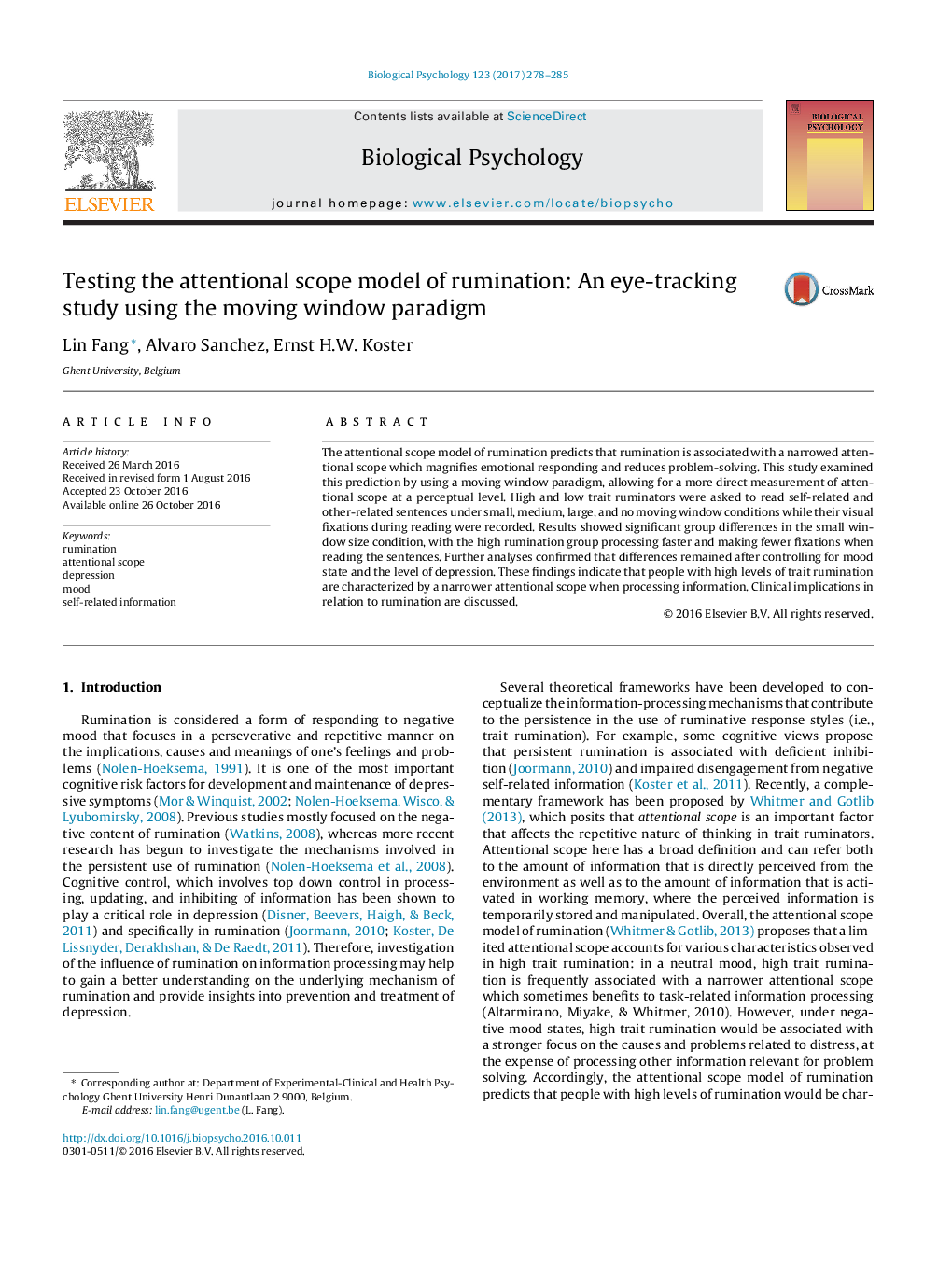| Article ID | Journal | Published Year | Pages | File Type |
|---|---|---|---|---|
| 5040548 | Biological Psychology | 2017 | 8 Pages |
â¢Rumination is a cognitive risk factor for depression.â¢Attentional scope model of rumination is tested.â¢Moving window paradigm used to assess attentional scope.â¢High ruminators process information faster in a narrow scope.â¢Findings support the attentional scope model of rumination
The attentional scope model of rumination predicts that rumination is associated with a narrowed attentional scope which magnifies emotional responding and reduces problem-solving. This study examined this prediction by using a moving window paradigm, allowing for a more direct measurement of attentional scope at a perceptual level. High and low trait ruminators were asked to read self-related and other-related sentences under small, medium, large, and no moving window conditions while their visual fixations during reading were recorded. Results showed significant group differences in the small window size condition, with the high rumination group processing faster and making fewer fixations when reading the sentences. Further analyses confirmed that differences remained after controlling for mood state and the level of depression. These findings indicate that people with high levels of trait rumination are characterized by a narrower attentional scope when processing information. Clinical implications in relation to rumination are discussed.
